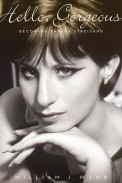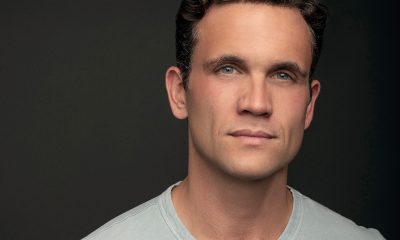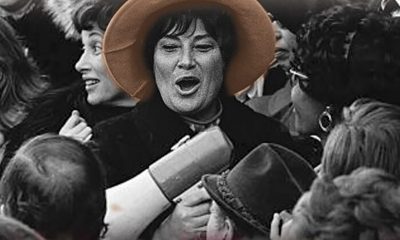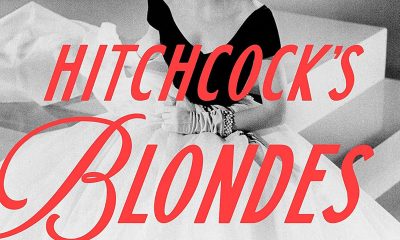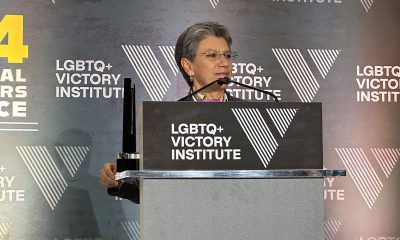Arts & Entertainment
‘Hello Gorgeous’
Gay biographer deconstructs Streisand’s ascent to superstardom
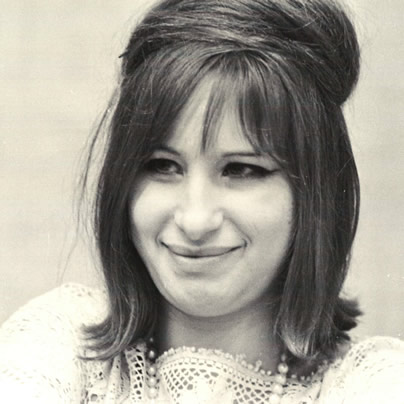
Jewish Literary Festival: William Mann
Closing Night
Wednesday, 7:30 p.m.
D.C. Jewish Community Center
1529 16th Street, NW
Tickets: $10
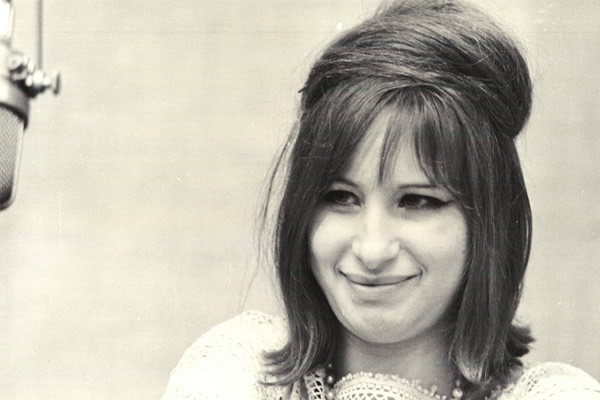
Barbra Streisand in the recording studio for Columbia in New York, mid-1960s. (Photo from the Collection of Stuart Lippner, courtesy Houghton Mifflin Harcourt)
It’s an interesting time for Barbra Streisand fans.
She’s on tour and played New York last weekend (no D.C. dates scheduled).
A (sort of) new album dropped Oct. 9 called “Release Me” that collects 11 previously unreleased outtakes from various album projects going back to the beginning of her career in the early ‘60s. The faithful legion, of course, are beside themselves finally getting to hear rare cuts like her interpretations of Jimmy Webb’s “Didn’t We” and “Home” from “The Wiz.” Her MusiCares tribute concert, in which she was serenaded last year by Diana Krall, Barry Mainlow, Seal, Stevie Wonder and others, is out on DVD and Blu-ray from Shout! Factory Nov. 13.
But just as interesting is the new book “Hello, Gorgeous: Becoming Barbra Streisand,” also released this month from gay author William J. Mann, who, in addition to several novels, has penned well-received bios on William Haines, John Schlesinger, Katharine Hepburn and Elizabeth Taylor. Mann, an iconoclast who doesn’t smash his subjects but delights in deconstructing widely parsed anecdotes of show biz folklore, zeroes in on Streisand’s early years from early 1960 (when she was 17) to the spring of ’64 by which time she had opened in the long-delayed “Funny Girl” on Broadway and recorded three platinum-selling albums for Columbia.
Mann focuses on her early years because he says “everything we think we know about her can be traced back to this seminal period … She arrived in New York in 1959 as a penniless teenager without any connections or experience. Less than five years later she was the top-selling female recording artist in the country and the star of one of Broadway’s biggest smash hits. Going in as close as I have in this book has allowed me to really shed light on how she accomplished such a feat.”
Mann’s in Washington Wednesday on his book tour at the D.C. Jewish Community Center for a 7 p.m. Streisand presentation after which he’ll sign copies of the book. During two phone chats this week, the 49-year-old author talked about the process of bringing the book — he wasn’t particularly a Streisand fan before — to fruition and how writing it compared to his mammoth Hepburn and Taylor tomes.
Mann says focusing on Streisand’s early years turned out to be an unexpected advantage. Because few of the key players are still in touch with the notoriously private and exacting legend, they felt freer, Mann says, to cooperate. He wasn’t on a mission to bash Streisand, but he did want an honest and fresh take.
“These very, very famous people really live in a bubble,” he says. “It becomes virtually impossible to get an unvarnished opinion because any colleague you talk to is going to have nothing but superlatives and that becomes very difficult. … About 90 percent of the people I spoke to didn’t continue on with her. … so they could be candid. They didn’t have to think, ‘Gee, is Barbra gonna be pissed at me, I have to work with her next month.’”
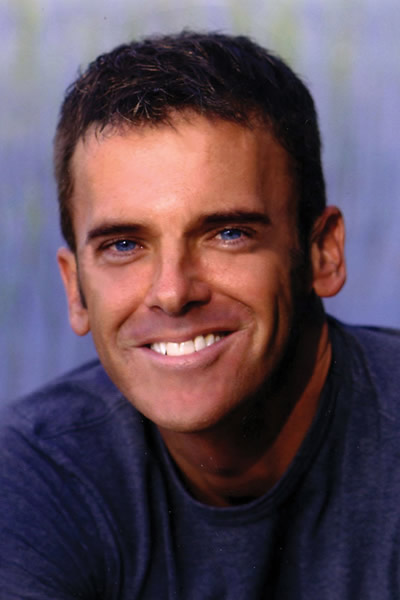
Gay historian and author William J. Mann (Photo by Michael Childers; courtesy Houghton Mifflin Harcourt)
Despite calling the book “notable for its breadth of detail and fair mindedness,” biographer James Gavin writing for the New York Times said “little” of the book is new, a point Mann counters with his biggest coup — being granted the right to delve into the Jerome Robbins (the Broadway legend who worked on “Funny Girl”) papers at the New York Public Library, which had not previously been plumbed for any Streisand book and are not available to researchers (Mann got an exception through the Robbins’ estate).
And even though Streisand’s first boyfriend, Barry Dennen has written an entire book (1997’s “My Life with Barbra”) on their relationship, Mann says he got fresh material from the gay actor for “Gorgeous.”
One of Mann’s favorite experiences was visiting Phyllis Diller, who became a pal and mentor of the young Streisand during their time performing at seedy New York nightclub the Bon Soir in the early ‘60s. (Diller died in August.)
“She was such a hoot,” Mann says with a laugh. “That interview was probably the most enjoyable of the process. I got to go to her house and she was flirting and laughing. I asked her if she’d give me one of her trademark laughs and she did. I just sat there thinking, ‘I love my job.’”
Other “gets” weren’t so splashy but proved equally invaluable. Though scads of Streisand material has been released and is on YouTube, Mann says the Streisand aficionados — almost all gay — were helpful. He thinks his track record on the Hepburn and Taylor books helped open doors on several fronts.
“There’s one fan, and of course he’s made me promise never to reveal who he is, who had some really amazing stuff. There was a DVD (Streisand) was planning to put out maybe five-six years ago of all her old TV appearances but for whatever reason, it never came out. This guy had a bootleg copy of it, which was extraordinarily helpful. Another fan had some of her original contracts. Which is crazy. Who knows how they get this stuff. You’d think she’d have those herself, but somehow they had them and those were very helpful as well. And of course once you get in those fan circles, one things leads to another and another. I didn’t write it for the fans, because then you’d end up censoring it to please them, but they were a great help.”
Early signs are good.
According to Nielsen BookScan, the book has already sold about 2,000 copies. And a glowing USA Today review said Mann’s “meticulous research and insightful analysis go deeper than any previous (Streisand) biography.” Liz Smith called it “excellent.” Amazon reader feedback has been highly positive and perhaps the surest sign that the writer did his homework, there’s been nary a peep, at least so far, from the Streisand camp (she devotes a whole section of her official website to debunking what’s written about her — check out the juicy reads on her tangles with Larry Kramer over a never-made film adaptation of “The Normal Heart” she wanted to do).
At more than 500 pages, “Gorgeous” makes for a lengthy yet brisk read. Mann, who splits his time between New York and Provincetown (where he does most of his writing), is happy to engage a few questions the book inspires, one common enough that he’s written a Huffington Post piece on the topic: that is, surely it’s no coincidence that Streisand, who had several key gay men in her life very early on in her career, ended up one of the biggest gay entertainment icons of all time, right?
“It’s not a coincidence at all,” he says. “She was shaped by so many gay influences … in various ways. The way she dressed, the way she put a song across, the way she styled her songs, they way she interacted with an audience, it’s so obvious all her early mentors were gay and I believe that when those early audiences went to see her, they responded to something familiar. The way she laughed, the way she moved, her campy humor. There was something there gay men recognized and thought, ‘Oh, we can relate to this chick.’ And she was not the first one to have this happen either. It goes all the way back to Mae West and the drag queens she worked with in New York. You see it with Judy (Garland) with Roger Edens, with Joan Crawford and Billy Haines … with Madonna it was the same thing.”
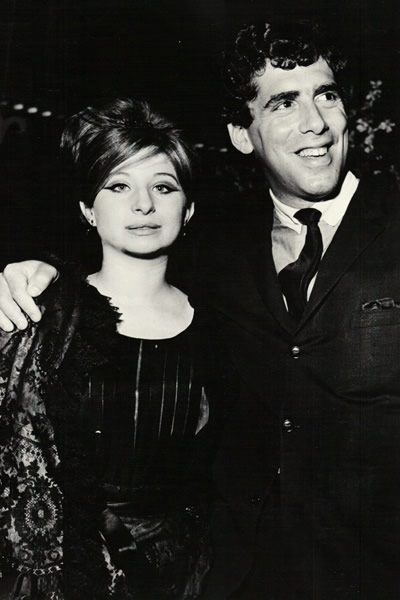
Barbra Streisand with first husband, actor Elliott Gould en route to the Tony Awards on April 29, 1962. (Photo from the collection of Stuart Lippner, courtesy Houghton Mifflin Harcourt)
And since Mann, with the Taylor and Streisand books especially, has focused on the nature of fame and how it was achieved — a dissection of the lucky breaks versus the raw material — another question occurs: given Streisand’s undeniable talent and famous drive, was her legend and success inevitable?
Mann says no.
“She would like us to think that, but no, I don’t think it was at all. I think she benefited form some really shrewed salesmanship and a degree of luck. Just the fact that there were some major parts with ‘I Can Get it For You Wholesale’ and “Funny Girl’ for unusual looking Jewish girls, she was lucky that she was there for those parts at the time they came along. Of course she’s brilliantly talented but there are lots of people who were. You hear some of these other singers from the nightclub era like Blossom Dearie or Joanna Beretta and you’re like, ‘Wow, they’re every bit as good as Barbra,’ but they lacked something — either a very shrewd publicity campaign on their behalf or perhaps their own ambition … it took a terrific amount of PR to make it happen.”
Game time: Kate, Liz or Babs?
William J. Mann has written well-received bios of three of the most famous legends the 20th century produced: Katharine Hepburn, Elizabeth Taylor and now, Barbra Streisand. At the end of an interview, Mann was game for a “lightening round” in which he considers how the three icons stack up. He had to answer each question with one of the three names.
Of the three, which had:
- the most raw talent? “Streisand”
- the most career triumphs? “Taylor”
- Was the most personally content? “Taylor”
- Whose personality evolved the most over the decades? “Hepburn”
- Which was the most fan friendly? “Taylor, by far.”
- The most private? “Streisand. Hepburn was private, but she also put things out there, although not always her true self. So I guess Streisand.”
- Whose work has best stood the test of time? “That’s kind of a draw. They all have. You look at Hepburn in a film like “Alice Adams,” which is this beautiful, brilliant, heartbreaking film that totally stands up. Or Elizabeth in ‘Virginia Woolf’ and you just think, ‘Wow, nobody could have done that better.’ Or one of Barbra’s albums.”
- Which had (or has) the most ardent fans? “Streisand”
- Was the toughest to research? “I suppose Hepburn but she had just passed away so that opened some doors. The other two were alive when I was writing.” (Taylor died shortly after the Mann book came out.)
- Had the most gays in her personal life? “Taylor”
- Had the easiest path to stardom? “Taylor. It was practically handed to her.”
- The toughest? “Streisand, even though it was really fast.”
- And just for fun, any word on how Streisand or Hepburn felt about tying for the Best Actress Oscar in ’68? “They both probably hated to share it,” he says. “Hepburn made a big show of not caring about the Oscars but of course she cared a great deal. … Streisand was very gracious when she accepted (Hepburn did not attend) and said she was ‘in great company.’ It was probably unlike either of them to send the other a congratulatory note, but I don’t fully know the answer to that or whether anybody ever tried to get them together for a photo. I suspect neither of them would have been too wild about that.”
— Joey DiGuglielmo
Books
Feminist fiction fans will love ‘Bog Queen’
A wonderful tale of druids, warriors, scheming kings, and a scientist
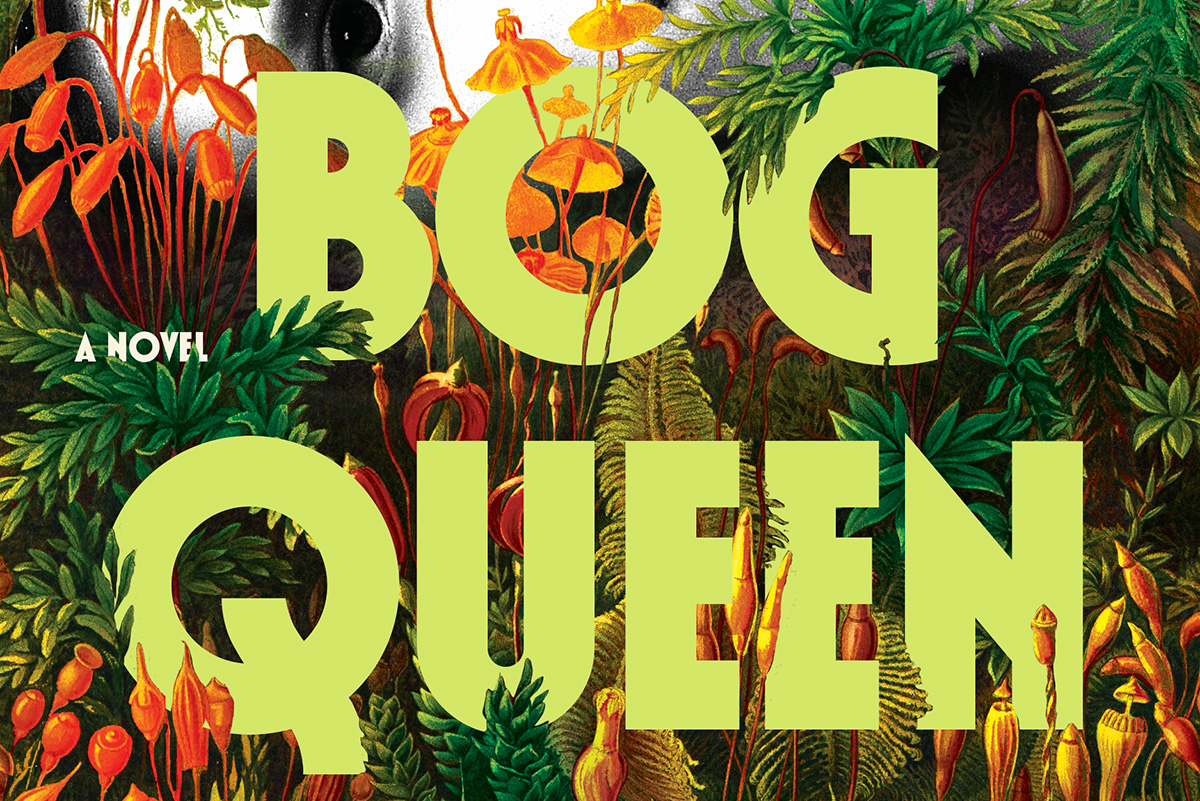
‘Bog Queen’
By Anna North
c.2025, Bloomsbury
$28.99/288 pages
Consider: lost and found.
The first one is miserable – whatever you need or want is gone, maybe for good. The second one can be joyful, a celebration of great relief and a reminder to look in the same spot next time you need that which you first lost. Loss hurts. But as in the new novel, “Bog Queen” by Anna North, discovery isn’t always without pain.

He’d always stuck to the story.
In 1961, or so he claimed, Isabel Navarro argued with her husband, as they had many times. At one point, she stalked out. Done. Gone, but there was always doubt – and now it seemed he’d been lying for decades: when peat cutters discovered the body of a young woman near his home in northwest England, Navarro finally admitted that he’d killed Isabel and dumped her corpse into a bog.
Officials prepared to charge him.
But again, that doubt. The body, as forensic anthropologist Agnes Lundstrom discovered rather quickly, was not that of Isabel. This bog woman had nearly healed wounds and her head showed old skull fractures. Her skin glowed yellow from decaying moss that her body had steeped in. No, the corpse in the bog was not from a half-century ago.
She was roughly 2,000 years old.
But who was the woman from the bog? Knowing more about her would’ve been a nice distraction for Agnes; she’d left America to move to England, left her father and a man she might have loved once, with the hope that her life could be different. She disliked solitude but she felt awkward around people, including the environmental activists, politicians, and others surrounding the discovery of the Iron Age corpse.
Was the woman beloved? Agnes could tell that she’d obviously been well cared-for, and relatively healthy despite the injuries she’d sustained. If there were any artifacts left in the bog, Agnes would have the answers she wanted. If only Isabel’s family, the activists, and authorities could come together and grant her more time.
Fortunately, that’s what you get inside “Bog Queen”: time, spanning from the Iron Age and the story of a young, inexperienced druid who’s hoping to forge ties with a southern kingdom; to 2018, the year in which the modern portion of this book is set.
Yes, you get both.
Yes, you’ll devour them.
Taking parts of a true story, author Anna North spins a wonderful tale of druids, vengeful warriors, scheming kings, and a scientist who’s as much of a genius as she is a nerd. The tale of the two women swings back and forth between chapters and eras, mixed with female strength and twenty-first century concerns. Even better, these perfectly mixed parts are occasionally joined by a third entity that adds a delicious note of darkness, as if whatever happens can be erased in a moment.
Nah, don’t even think about resisting.
If you’re a fan of feminist fiction, science, or novels featuring kings, druids, and Celtic history, don’t wait. “Bog Queen” is your book. Look. You’ll be glad you found it.
Movies
A Shakespearean tragedy comes to life in exquisite ‘Hamnet’
Chloe Zhao’s devastating movie a touchstone for the ages

For every person who adores Shakespeare, there are probably a dozen more who wonder why.
We get it; his plays and poems, composed in a past when the predominant worldview was built around beliefs and ideologies that now feel as antiquated as the blend of poetry and prose in which he wrote them, can easily feel tied to social mores that are in direct opposition to our own, often reflecting the classist, sexist, and racist patriarchal dogma that continues to plague our world today. Why, then, should we still be so enthralled with him?
The answer to that question might be more eloquently expressed by Chloe Zhao’s “Hamnet” – now in wide release and already a winner in this year’s barely begun awards season – than through any explanation we could offer.
Adapted from the novel by Maggie O’Farrell (who co-wrote the screenplay with Zhao), it focuses its narrative on the relationship between Will Shakespeare (Paul Mescal) and his wife Agnes Hathaway (Jessie Buckley), who meet when the future playwright – working to pay off a debt for his abusive father – is still just a tutor helping the children of well-to-do families learn Latin. Enamored from afar at first sight, he woos his way into her life, and, convincing both of their families to approve the match (after she becomes pregnant with their first child), becomes her husband. More children follow – including Hamnet (Jacobi Jupe), a “surprise” twin boy to their second daughter – but, recognizing Will’s passion for writing and his frustration at being unable to follow it, Agnes encourages him to travel to London in order to immerse himself in his ambitions.
As the years go by, Agnes – aided by her mother-in-law (Emily Watson) and guided by the nature-centric pagan wisdom of her own deceased mother – raises the children while her husband, miles away, builds a successful career as the city’s most popular playwright. But when an outbreak of bubonic plague results in the death of 11-year-old Hamnet in Will’s absence, an emotional wedge is driven between them – especially when Agnes receives word that her husband’s latest play, titled “Hamlet,” an interchangeable equivalent to the name of their dead son, is about to debut on the London stage.
There is nothing, save the bare details of circumstance around the Shakespeare family, that can be called factual about the narrative told in “Hamnet.” Records of Shakespeare’s private life are sparse and short on context, largely limited to civic notations of fact – birth, marriage, and death announcements, legal documents, and other general records – that leave plenty of space in which to speculate about the personal nuance such mundane details might imply. What is known is that the Shakespeares lost their son, probably to plague, and that “Hamlet” – a play dominated by expressions of grief and existential musings about life and death – was written over the course of the next five years. Shakespearean scholars have filled in the blanks, and it’s hard to argue with their assumptions about the influence young Hamnet’s tragic death likely had over the creation of his father’s masterwork. What human being would not be haunted by such an event, and how could any artist could avoid channeling its impact into their work, not just for a time but for forever after?
In their screenplay, O’Farrell and Zhao imagine an Agnes Shakespeare (most records refer to her as “Anne” but her father’s will uses the name “Agnes”) who stands apart from the conventions of her town, born of a “wild woman” in the woods and raised in ancient traditions of mysticism and nature magic before being adopted into her well-off family, who presents a worthy match and an intellectual equal for the brilliantly passionate creator responsible for some of Western Civilization’s most enduring tales. They imagine a courtship that would have defied the customs of the time and a relationship that feels almost modern, grounded in a love and mutual respect that’s a far cry from most popular notions of what a 16th-century marriage might look like. More than that, they imagine that the devastating loss of a child – even in a time when the mortality rate for children was high – might create a rift between two parents who can only process their grief alone. And despite the fact that almost none of what O’Farrell and Zhao present to us can be seen, at best, as anything other than informed speculation, it all feels devastatingly true.
That’s the quality that “Hamnet” shares with the ever-popular Will Shakespeare; though it takes us into a past that feels as alien to us as if it took place upon a different planet, it evokes a connection to the simple experience of being human, which cuts through the differences in context. Just as the kings, heroes, and fools of Shakespeare’s plays express and embody the same emotional experiences that shape our own mundane modern lives, the film’s portrayal of these two real-life people torn apart by personal tragedy speaks directly to our own shared sense of loss – and it does so with an eloquence that, like Shakespeare’s, emerges from the story to make it feel as palpable as if their grief was our own.
Yes, the writing and direction – each bringing a powerfully feminine “voice” to the story – are key to the emotional impact of “Hamnet,” but it’s the performances of its stars that carry it to us. Mescal, once more proving himself a master at embodying the kind of vulnerable masculine tenderness that’s capable of melting our hearts, gives us an accessible Shakespeare, driven perhaps by a spark of genius yet deeply grounded in the tangible humanity that underscores the “everyman” sensibility that informs the man’s plays. But it’s Buckley’s movie, by a wide margin, and her bold, fierce, and deeply affecting performance gives voice to a powerful grief, a cry against the injustice and cruelty of what we fumblingly call “fate” that resonates deep within us and carries our own grief, over losses we’ve had and losses we know are yet to come, along with her on the journey to catharsis.
That’s the word – “catharsis” – that defines why Shakespeare (and by extension, “Hamnet”) still holds such power over the imagination of our human race all these centuries later. The circumstantial details of his stories, wrapped up in ancient ideologies that still haunt our cultural imagination, fall away in the face of the raw expression of humanity to which his characters give voice. When Hamlet asks “to be or not to be?,” he is not an old-world Danish Prince contemplating revenge against a traitor who murdered his father; he is Shakespeare himself, pondering the essential mystery of life and death, and he is us, too.
Likewise, the Agnes Shakespeare of “Hamnet” (masterfully enacted by Buckley) embodies all our own sorrows – past and future, real and imagined – and connects them to the well of human emotion from which we all must drink; it’s more powerful than we expect, and more cleansing than we imagine, and it makes Zhao’s exquisitely devastating movie into a touchstone for the ages.
We can’t presume to speak for Shakespeare, but we are pretty sure he would be pleased.

Friday, January 9
Women in Their Twenties and Thirties will be at 8 p.m. on Zoom. This is a social discussion group for queer women in the Washington, D.C. area. For more details, visit Facebook.
“Backbone Comedy” will be at 8 p.m. at As You Are. Backbone Comedy is a queer-run fundraiser comedy show at As You Are Bar DC, where comics stand up for a cause. Each show, a percentage of proceeds go to a local organization – Free Minds DC, a reentry organization for individuals impacted by incarceration. Tickets cost $19.98 and are available on Eventbrite.
Saturday, January 10
Go Gay DC will host “LGBTQ+ Community Brunch” at 11 a.m. at Freddie’s Beach Bar & Restaurant. This fun weekly event brings the DMV area LGBTQ+ community, including allies, together for delicious food and conversation. Attendance is free and more details are available on Eventbrite.
Monday, January 12
“Center Aging: Monday Coffee Klatch” will be at 10 a.m. on Zoom. This is a social hour for older LGBTQ+ adults. Guests are encouraged to bring a beverage of choice. For more information, contact Adam ([email protected]).
Genderqueer DC will be at 7 p.m. on Zoom. This is a support group for people who identify outside of the gender binary, whether you’re bigender, agender, genderfluid, or just know that you’re not 100% cis. For more details, visit genderqueerdc.org or Facebook.
Tuesday, January 13
Coming Out Discussion Group will be at 7 p.m. on Zoom. This is a safe space to share experiences about coming out and discuss topics as it relates to doing so — by sharing struggles and victories the group allows those newly coming out and who have been out for a while to learn from others. For more details, visit the group’s Facebook.
Trans Discussion Group will be at 7 p.m. on Zoom. This group is intended to provide an emotionally and physically safe space for trans people and those who may be questioning their gender identity/expression to join together in community and learn from one another. For more details, email [email protected].
Wednesday, January 14
Job Club will be at 6 p.m. on Zoom upon request. This is a weekly job support program to help job entrants and seekers, including the long-term unemployed, improve self-confidence, motivation, resilience and productivity for effective job searches and networking — allowing participants to move away from being merely “applicants” toward being “candidates.” For more information, email [email protected] or visit thedccenter.org/careers.
The DC Center for the LGBT Community will partner with House of Ruth to host “Art & Conversation” at 3 p.m. at 1827 Wiltberger St., N.W. This free workshop will involve two hours of art making, conversation, and community. Guests will explore elements of healthy relationships with a community-centered art activity. This workshop involves paint, so please dress accordingly. All materials will be provided. For more details, email [email protected].
Thursday, January 15
The DC Center’s Fresh Produce Program will be held all day at the DC Center for the LGBT Community. People will be informed on Wednesday at 5 p.m. if they are picked to receive a produce box. No proof of residency or income is required. For more information, email [email protected] or call 202-682-2245.
Virtual Yoga Class will be at 7 p.m. on Zoom. This free weekly class is a combination of yoga, breathwork and meditation that allows LGBTQ+ community members to continue their healing journey with somatic and mindfulness practices. For more details, visit the DC Center’s website.
-

 National4 days ago
National4 days agoWhat to watch for in 2026: midterms, Supreme Court, and more
-

 Opinions4 days ago
Opinions4 days agoA reminder that Jan. 6 was ‘textbook terrorism’
-

 Colombia5 days ago
Colombia5 days agoClaudia López criticizes Trump over threats against Colombian president
-

 District of Columbia4 days ago
District of Columbia4 days agoImperial Court of Washington drag group has ‘dissolved’

